Although we have developed dedicated vibroflotation equipment we want to share to types of work-around methods with a vibro hammer that may work just as well in your circumstances to increase load bearing capacity of the soil.
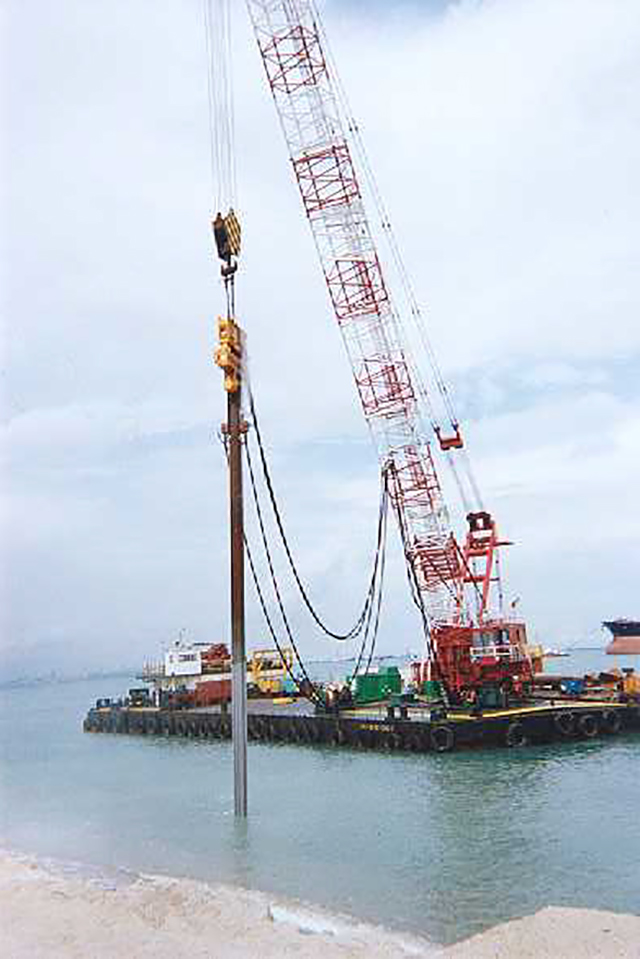
* Sand compaction with pointed tip, winged, H-beam and resonance free vibratory hammer The design for the lance can be optimized by adding water jetting, and optimizing the design of the fins. The RF is needed because the variable moment allows the user to control the frequency of the pile and achieve different compaction goals. The integrated ICE Vibro Monitoring System is necessary to set-up a compaction protocol, which keeps tabs on the correct settings of the eccentric moment and RPM of the vibro.
* Stone column with capped steel casing and normal or resonance free vibratory hammer. A hollow steel pile drives down a steel or concrete cover cap down to depth, the casing is filled with stones and then extracted. The soil is compacted in two ways: by pushing the soil into a denser grid and by building a stone column.
Construction Methodology Sand columns
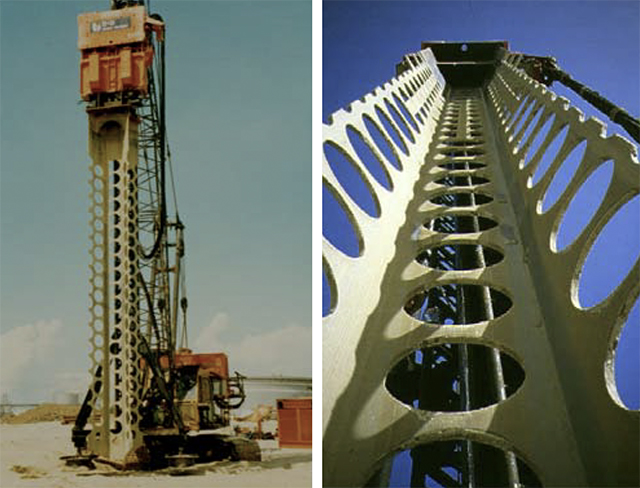
When fitted with water jetting and air jetting the H-beam lance is capable of wet top feed vibro-compaction. This lance penetrates the soil; the vibro hammer’s vibrations created an amplitude that, in combination with high pressure water jetting, packs the soil particles more closely together. A wheeled loader deposits sand around the lance as it is gradually raised and lowered back up to the surface to fill up the column with more sand.
This type of application can be carried out with a variable moment vibro such as the 28RF and 600 power pack to build 12-15m long sand columns. The lance is vibrated to full depth and then lifted one meter at a time after one minute of compaction has passed, or after the power packs working pressure reach a certain threshold (for example 270 bar, indicating the densification had reached its target level). The compaction is assisted by a water jetting and air jetting system attached to the H-beams body. Depending on the soil conditions, the water pressure needed can range from 5 to 17 bar, with most of the site working with 10-15 bars of water pressure.
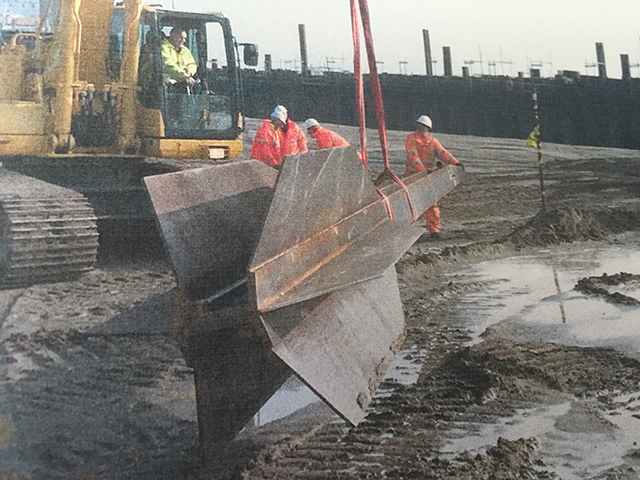
Construction methodology stone columns: VIDEO 815C
Prepare the pile cap; place pile opening on the cap and drive the pile with the 815C vibratory hammer; fit funnel on casing and use excavator to fill with gravel up to -1 meter below ground level; extract the casing with the 815C vibratory hammer; back-fill the last meter of the pile to build the full-length stone column. The client devised a way to increase the pile integrity: a ring was welded on the outside of the casing one meter from the tip to reduce the inflow of ground water and mud ensuring the column reached design length. One hammer can be paired with one excavator and up to three casings to maximize daily production rate.
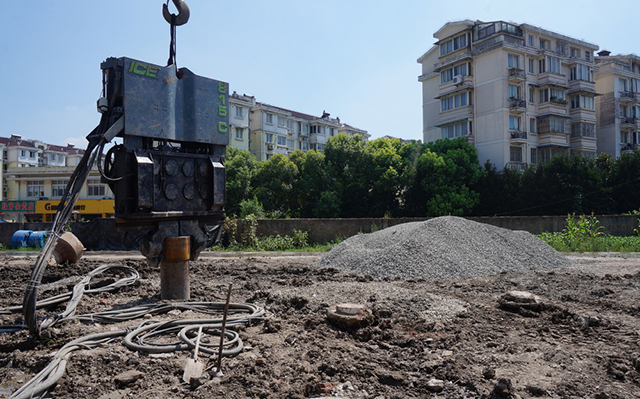
ICE vibratory hammers are equipped with a cooling system ensuring the gear box never overheats and can drive continuously in ambient temperatures of up to 55˚C. The ability to work in high temperatures was an important factor in the successful conclusion of this project as the hammer was working at a high load but with a low working pressure of just 100-120 bar and had only a few minutes of idling during the filling of the column with gravel before extraction of the casing began again. The demonstration showed that a good fitting pile cap is worth the extra cost. If the cap is too large driving will be hard and the equipment will suffer. It is more cost effective to make a good fitting cap because driving efficiency will be increased and there is less risk of rebound damage as the risk exists that the hammers pounds and bounces on the cap.
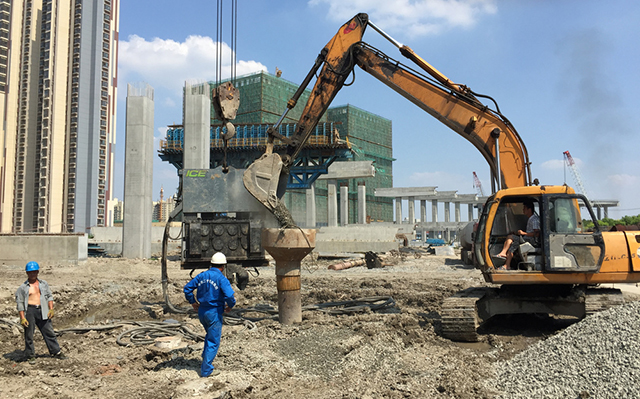
The bearing capacity of the improved soil was tested using a static weight experiment. The results showed an increase of bearing capacity from the original 8 ton/ square meter to 30ton/ square meter.
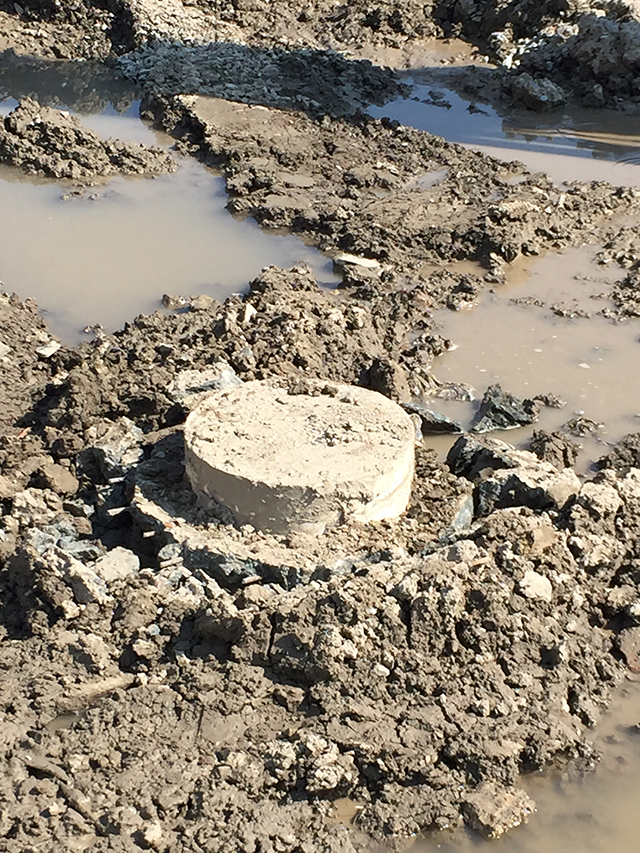
The two methods discussed in this article are environmentally friendly as no bentonite and concrete are used. Instead of having the hydraulic equipment drive directly into the soil these methods use steel elements to take over this part of the job reducing wear and tear on the machine itself. Vibratory hammers are a cost-effective solution for all sorts of ground improvement applications including railroad tracks, roads, highways, and airport runways. Contact us today to understand how ICE can help you.
